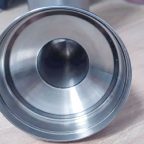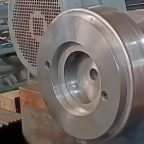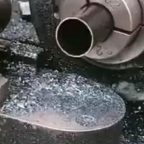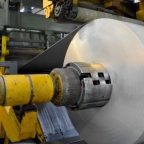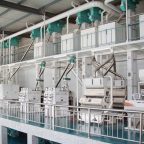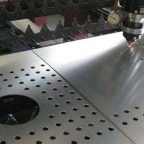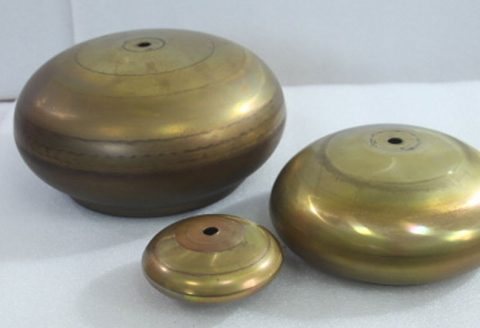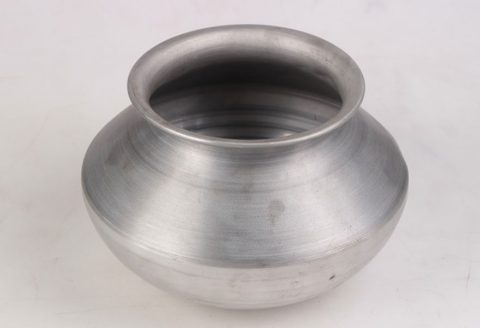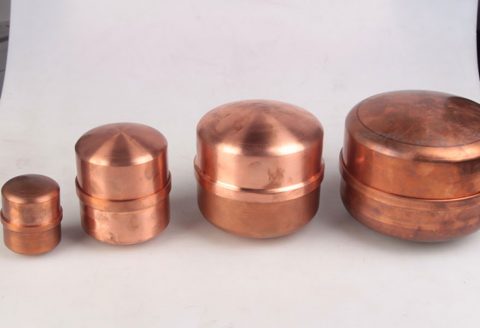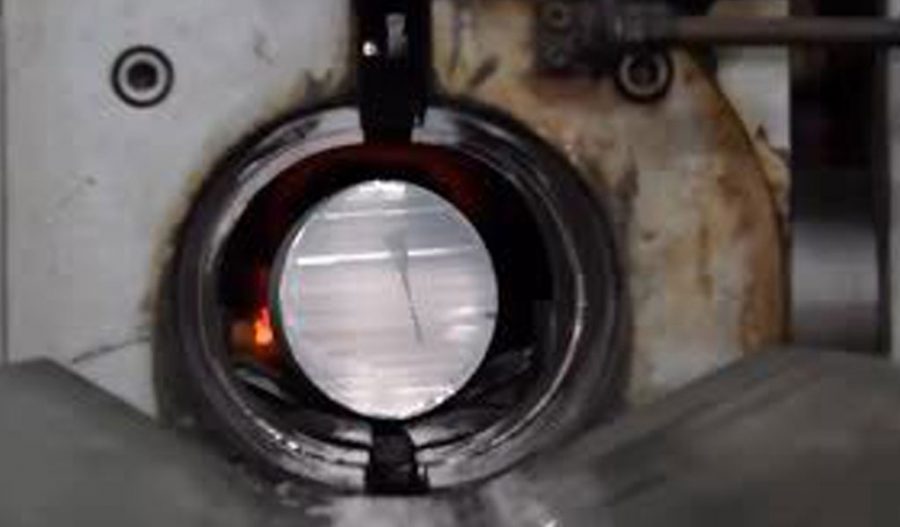
Aluminum spinning, a metal forming process that involves rotating a metal disc or tube on a lathe to shape it into axially symmetric components, has been a cornerstone of manufacturing for producing lightweight, high-strength parts used in industries such as aerospace, automotive, and defense. The process is valued for its ability to create seamless, complex geometries with minimal material waste. However, traditional aluminum spinning faces challenges, including limitations in achieving intricate internal features, high material costs for complex preforms, and the need for multiple processing steps to achieve desired tolerances and surface finishes.
The advent of additive manufacturing (AM), often referred to as 3D printing, has introduced new possibilities for enhancing traditional manufacturing techniques. AM enables the layer-by-layer deposition of materials, allowing for the creation of complex geometries that are difficult or impossible to achieve with conventional methods. Hybrid manufacturing, which combines additive and subtractive or formative processes, has emerged as a promising approach to overcome the limitations of individual techniques. In this context, the integration of additive preforms into the aluminum spinning process represents a novel frontier in hybrid manufacturing, offering potential improvements in efficiency, design flexibility, and material utilization.
This article explores a new process for aluminum spinning that leverages additive preforms within a hybrid manufacturing framework. By combining the precision of additive manufacturing with the material efficiency of spinning, this approach aims to address longstanding challenges in producing complex, high-performance aluminum components. The discussion encompasses the scientific principles, technological advancements, material considerations, process optimization, and applications of this hybrid approach, supported by detailed comparisons and analyses.
Aluminum Spinning: Principles and Applications
Aluminum spinning is a metalworking process that involves clamping a flat metal disc or tube (known as a blank or preform) onto a spinning lathe and shaping it over a mandrel using a roller or tool. The process is typically categorized into conventional spinning, shear spinning, and flow forming, each distinguished by the degree of thickness reduction and deformation mechanics. Conventional spinning maintains the blank’s thickness while shaping it, shear spinning reduces thickness while maintaining diameter, and flow forming reduces both thickness and diameter for elongated components.
Aluminum alloys, such as the 2xxx, 6xxx, and 7xxx series, are widely used in spinning due to their favorable properties, including high strength-to-weight ratios, corrosion resistance, and formability. Applications range from aerospace components like nose cones and fuel tanks to automotive parts such as wheels and exhaust components. However, traditional spinning is limited by the complexity of the preform, which is typically a simple disc or tube, and the need for subsequent machining to achieve precise tolerances or intricate internal features.
Additive Manufacturing: A Paradigm Shift
Additive manufacturing builds components layer by layer from digital models, typically using techniques such as laser powder bed fusion (L-PBF), wire arc additive manufacturing (WAAM), or additive friction stir deposition (AFSD). For aluminum alloys, L-PBF and WAAM are particularly relevant, as they allow for the creation of near-net-shape preforms with complex geometries. However, AM processes face challenges such as porosity, residual stresses, and surface roughness, which can compromise mechanical properties and require post-processing.
The integration of AM with traditional processes like spinning offers a hybrid approach that leverages the strengths of both. Additive preforms can be designed with tailored geometries, such as internal ribs or variable thicknesses, which are then refined through spinning to achieve final dimensions and surface quality. This synergy reduces material waste, shortens production times, and enables the creation of components with enhanced functionality.
Hybrid Manufacturing: Bridging Additive and Formative Processes
Hybrid manufacturing combines additive and subtractive or formative processes within a single workflow, often using integrated machine tools. For aluminum, hybrid approaches such as AM combined with computer numerical control (CNC) machining or forging have shown promise in improving efficiency and part quality. The concept of additive preforms for spinning represents a specific subset of hybrid manufacturing, where AM is used to create a near-net-shape preform that is subsequently spun to achieve the final geometry.
Recent studies have highlighted the potential of hybrid manufacturing for aluminum alloys. For example, the combination of L-PBF with CNC machining has been shown to improve surface finish and dimensional accuracy, while WAAM combined with rolling reduces porosity and enhances mechanical properties. The integration of additive preforms into spinning extends these benefits by enabling the production of complex, thin-walled components with high ribs or internal features, which are challenging to achieve through traditional spinning alone.
The New Process: Aluminum Spinning with Additive Preforms
The proposed process involves the following stages:
- Design and Fabrication of Additive Preforms: A digital model of the preform is created using computer-aided design (CAD) software, incorporating features such as internal ribs, variable wall thicknesses, or complex contours. The preform is then fabricated using an AM technique, such as L-PBF or WAAM, with aluminum alloys like AlSi10Mg or AA6061.
- Preform Preparation: The additive preform is inspected for defects (e.g., porosity, cracks) and may undergo initial surface treatment or heat treatment to reduce residual stresses and improve formability.
- Spinning Process: The preform is mounted on a spinning lathe, where it is rotated and shaped over a mandrel using a roller. The spinning process refines the geometry, reduces thickness where necessary, and improves surface finish.
- Post-Processing: The spun component undergoes finishing operations, such as CNC machining or polishing, to achieve final tolerances and surface quality. Additional heat treatments may be applied to optimize mechanical properties.
This hybrid process leverages the design freedom of AM to create preforms with near-net-shape geometries, reducing the material and time required for spinning. The spinning process, in turn, enhances the preform’s surface quality and mechanical properties, addressing common AM limitations.
Advantages of the Hybrid Approach
The integration of additive preforms into aluminum spinning offers several advantages:
- Design Flexibility: AM allows for the creation of preforms with complex internal features, such as ribs or channels, which are difficult to achieve with traditional spinning blanks.
- Material Efficiency: Near-net-shape preforms reduce the buy-to-fly ratio (the weight ratio of raw material to final part), minimizing waste compared to conventional spinning or machining.
- Reduced Tooling Costs: The ability to produce customized preforms reduces the need for complex mandrels or fixtures, lowering production costs.
- Improved Mechanical Properties: Spinning can refine the microstructure of AM parts, reducing porosity and residual stresses while enhancing strength and ductility.
- Time Savings: The hybrid process streamlines production by combining the rapid prototyping capabilities of AM with the efficiency of spinning.
Challenges and Limitations
Despite its potential, the hybrid process faces several challenges:
- Material Compatibility: AM aluminum alloys, such as AlSi10Mg, may exhibit different formability characteristics compared to wrought alloys like AW-6082, requiring careful process optimization.
- Defect Management: AM preforms may contain defects like porosity or cracks, which can propagate during spinning and compromise part integrity.
- Process Integration: Coordinating AM and spinning processes requires precise control of parameters, such as preform geometry, spinning force, and temperature, to ensure consistent results.
- Cost Considerations: While AM reduces material waste, the high cost of AM equipment and powder feedstocks can offset savings, particularly for small production runs.
- Scalability: The hybrid process is well-suited for low-volume, high-value parts but may face challenges in scaling to mass production due to AM’s slower build rates.
Materials for Additive Preforms
Aluminum Alloys for AM and Spinning
The choice of aluminum alloy is critical for the success of the hybrid process, as it must be compatible with both AM and spinning. Common alloys include:
- AlSi10Mg: Widely used in L-PBF due to its good castability and mechanical properties. It offers high strength and moderate ductility but may exhibit porosity and residual stresses.
- AA6061: A versatile wrought alloy with excellent formability and corrosion resistance, suitable for both AM and spinning. It is commonly used in aerospace and automotive applications.
- AA7075: A high-strength alloy used in aerospace, but challenging for AM due to solidification cracking. Recent advancements in powder functionalization have improved its printability.
- Al-Cu-Li Alloys (e.g., Al2050): Emerging alloys for AM, offering high strength and low density. Their formability in spinning requires further investigation.
Preform Design Considerations
The design of additive preforms must account for both AM and spinning requirements. Key considerations include:
- Geometry Optimization: Preforms should be designed to minimize material use while providing sufficient stiffness to withstand spinning forces. Techniques such as topology optimization can be used to create lightweight, structurally efficient preforms.
- Surface Quality: AM preforms often have rough surfaces, which can affect spinning performance. Pre-machining or surface treatment may be necessary to ensure smooth deformation.
- Defect Mitigation: Strategies such as preheating the powder bed or applying ultrasonic vibration during AM can reduce porosity and cracking, improving preform quality.
- Thermal Management: AM preforms may retain residual stresses from rapid cooling, which can lead to distortion during spinning. Stress-relief heat treatments are often required.
Comparison of Aluminum Alloys for Hybrid Manufacturing
The following table compares key aluminum alloys for use in the hybrid AM-spinning process, based on their properties and suitability.
| Alloy | AM Technique | Strength (MPa) | Ductility (% Elongation) | Formability | Common Applications | AM Challenges | Spinning Challenges |
|---|---|---|---|---|---|---|---|
| AlSi10Mg | L-PBF, WAAM | 300–400 | 3–6 | Moderate | Aerospace, Automotive | Porosity, Residual Stresses | Surface Roughness, Porosity Propagation |
| AA6061 | L-PBF, AFSD | 250–300 | 10–15 | High | Structural, Marine | Moderate Printability | Good Formability, Minimal Defects |
| AA7075 | L-PBF (Functionalized) | 500–550 | 5–10 | Low | Aerospace, Defense | Solidification Cracking | Limited Ductility, Crack Sensitivity |
| Al2050 (Al-Cu-Li) | AFSD | 400–450 | 8–12 | Moderate | Aerospace | Limited AM Experience | Microstructure Refinement Needed |
Process Optimization
Additive Manufacturing Parameters
The quality of the additive preform is critical to the success of the spinning process. Key AM parameters include:
- Laser Power and Scan Speed (L-PBF): Higher laser power and optimized scan speeds reduce porosity and improve density but may increase residual stresses. Studies show that laser remelting can reduce surface roughness from 20.67 µm to 10.87 µm and porosity from 0.77% to 0.036%.
- Wire Feed Rate and Arc Stability (WAAM): Stable arc conditions and controlled wire feed rates minimize porosity and ensure uniform deposition. Laser-arc hybrid processes have shown promise in eliminating cracks in high-strength aluminum alloys.
- Preheating: Preheating the powder bed or substrate reduces thermal gradients, minimizing crack formation in alloys like AA7075.
Spinning Parameters
Spinning parameters must be tailored to the properties of the AM preform. Key considerations include:
- Spindle Speed: Higher speeds improve material flow but may increase heat generation, potentially exacerbating defects in AM preforms.
- Roller Force and Feed Rate: Controlled force and feed rates prevent cracking and ensure uniform deformation. Excessive force can propagate existing defects in AM preforms.
- Mandrel Design: The mandrel must accommodate the complex geometry of the AM preform, requiring advanced design techniques such as generative design.
Post-Processing Techniques
Post-processing enhances the quality of the final component. Common techniques include:
- CNC Machining: Removes surface roughness and achieves tight tolerances. Hybrid AM-CNC systems integrate these processes in a single setup, improving efficiency.
- Heat Treatment: Stress-relief treatments reduce residual stresses, while solution heat treatments and aging enhance strength and ductility. For AlSi10Mg, heat treatment can improve compressive properties by up to 27%.
- Surface Finishing: Polishing or shot peening improves surface quality and fatigue resistance.
Applications
Aerospace
The aerospace industry demands lightweight, high-strength components with complex geometries, making the hybrid AM-spinning process ideal for applications such as:
- Nose Cones and Fairings: Additive preforms with internal ribs can be spun into seamless, lightweight structures with enhanced stiffness.
- Fuel Tanks and Pressure Vessels: The process enables the production of thin-walled, high-strength vessels with tailored internal features.
- Repair and Maintenance: AFSD-based preforms can be used to repair damaged aerospace components, extending service life and supporting circular economy principles.
Automotive
In the automotive sector, the hybrid process supports the production of lightweight components to improve fuel efficiency and performance. Applications include:
- Wheels and Rims: AM preforms with optimized geometries reduce material use, while spinning ensures high surface quality and strength.
- Exhaust Components: Complex internal channels in preforms enhance thermal management, with spinning refining the final shape.
Defense and Industrial
The defense and industrial sectors benefit from the process’s ability to produce robust, customized components. Examples include:
- Missile Casings: High-strength, thin-walled casings with internal stiffeners improve performance and reduce weight.
- Hydraulic Components: Complex internal features enhance functionality, with spinning ensuring dimensional accuracy.
Case Studies
Case Study 1: Aerospace Nose Cone
A hybrid AM-spinning process was used to fabricate a nose cone for an aerospace application using AlSi10Mg. An L-PBF preform with internal ribs was designed to reduce weight while maintaining structural integrity. The preform was spun over a mandrel to achieve a seamless, thin-walled structure with a surface roughness of 1.5 µm, compared to 12 µm for the as-printed preform. Post-processing included stress-relief heat treatment and CNC machining, resulting in a 20% reduction in material use and a 15% improvement in compressive strength compared to traditional spinning.
Case Study 2: Automotive Wheel Rim
An AA6061 preform was fabricated using WAAM, incorporating variable wall thicknesses to optimize weight distribution. The preform was spun into a wheel rim, achieving a 25% reduction in buy-to-fly ratio compared to conventional methods. The final component exhibited a tensile strength of 280 MPa and 12% elongation, surpassing the performance of extruded counterparts.
Future Directions
The hybrid AM-spinning process is still in its early stages, with several areas for future research and development:
- Advanced Alloys: Developing AM-compatible alloys with improved formability and reduced defect sensitivity will enhance process reliability.
- Process Integration: Fully integrated hybrid systems combining AM, spinning, and CNC machining in a single setup could streamline production and reduce costs.
- Simulation and Modeling: Advanced simulation tools, including finite element analysis and machine learning, can optimize preform design and process parameters to minimize defects and improve performance.
- Sustainability: Life cycle assessments and eco-design strategies can further reduce the environmental footprint of the process, aligning with sustainable manufacturing goals.
Conclusion
The integration of additive preforms into aluminum spinning represents a transformative approach in hybrid manufacturing, combining the design freedom of AM with the material efficiency and precision of spinning. This process offers significant advantages in terms of design flexibility, material utilization, and mechanical performance, making it well-suited for high-value applications in aerospace, automotive, and defense. However, challenges such as defect management, material compatibility, and scalability must be addressed to realize its full potential. Ongoing research and technological advancements will continue to refine this process, paving the way for innovative, sustainable manufacturing solutions.
Maximize Tooling and CNC Metal Spinning Capabilities.
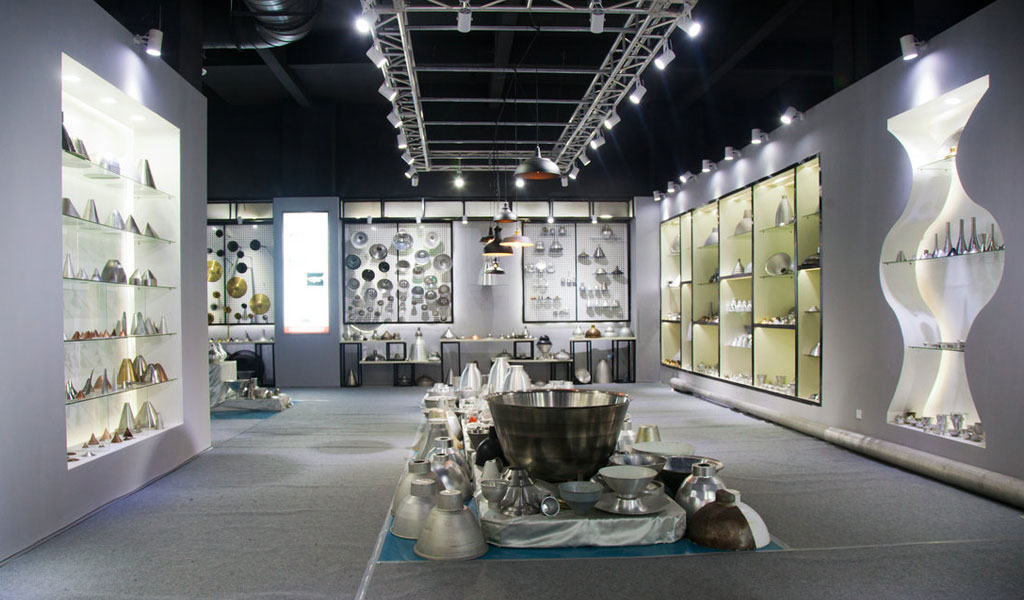
At BE-CU China Metal Spinning company, we make the most of our equipment while monitoring signs of excess wear and stress. In addition, we look into newer, modern equipment and invest in those that can support or increase our manufacturing capabilities. Our team is very mindful of our machines and tools, so we also routinely maintain them to ensure they don’t negatively impact your part’s quality and productivity.
Talk to us today about making a rapid prototype with our CNC metal spinning service. Get a direct quote by chatting with us here or request a free project review.
BE-CU China CNC Metal Spinning service include : CNC Metal Spinning,Metal Spinning Die,Laser Cutting, Tank Heads Spinning,Metal Hemispheres Spinning,Metal Cones Spinning,Metal Dish-Shaped Spinning,Metal Trumpet Spinning,Metal Venturi Spinning,Aluminum Spinning Products,Stainless Steel Spinning Products,Copper Spinning Products,Brass Spinning Products,Steel Spinning Product,Metal Spinnin LED Reflector,Metal Spinning Pressure Vessel,
